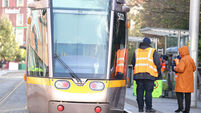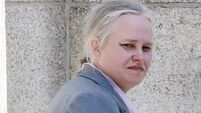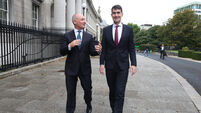Regions suffer as tourists opt for Dublin
The mid-eastern region, embracing Kildare, Meath and Wicklow, experienced a 65% drop in the number of tourist bed nights in the first quarter of 2006, compared to the same period last year.
However, Central Statistics Office (CSO) figures showed that over the same three months, Dublin’s accommodation figures doubled.
The disappointing statistics for the regions came despite extensive advertising to encourage short breaks in the regions. But the provinces all lost ground to the capital city in each category that the CSO measured, including the number of trips taken and the average nights people stayed.
Hardest hit were the mid-east and the Midland counties of Laois, Offaly, Longford and Westmeath. Tourism manager for both regions, Kevin Kidney, said the figures were disheartening but he believed year-end statistics would give a more accurate picture.
He said: “For domestic visits, it is surprising that Dublin continues to be so popular. We have developed a range of very key attractions and invested quite a lot in them, in particular in new hotel beds and affordable hotel accommodation.
“But that is not to take away from the fact that Dublin has been a tremendous success both nationally and internationally.
“I guess, generally, when it comes to first-quarter figures we will wait and see what the trends are like over a longer period of time.”
A spokeswoman for Fáilte Ireland said patterns shown in the CSO survey reflect its own tourism barometer and show that people are now taking more trips but staying for a lot less time.
Fáilte Ireland marketing official Liam Campbell said that rural environments were struggling to attract weekend tourists.
“It is unfortunate that the change in visitor trends is towards short stays and is working against rural trips and the bed-and-breakfast industry,” he said.
“At the moment it is about fly without drive and, if they are not taking their cars, visitors are staying in three-star hotels in cities. But I do think it will turn again.”
The figures also revealed domestic air travel failed to capture commuters’ imagination and, instead, showed the public suffering the costs of rising petrol prices to stay in their cars.
There has been a 35% drop in the number of people who flew within Ireland for overnight stays, compared to the same quarter in 2004, accounting now for just 1% of this type of journey.
The figures are a continuation of a trend that began last year when the number of flights taken in the first quarter halved.
However, the hardest hit was the B&B and guesthouse industry, which suffered a 28% drop in trade.
Mr Campbell warned that the sector, as a whole, must work hand-in-hand with rural Ireland to create an overall package for tourists who want to drift away from the cities.
“The more attractions the B&Bs can offer — golfing, fishing and so on with their product — the more they can provide something different to the customer. The way forward is to tap into other attractions and link into all the aspects of the countryside.
“The B&B will come back if the service providers have their fingers on the pulse and know what the customer wants.”












